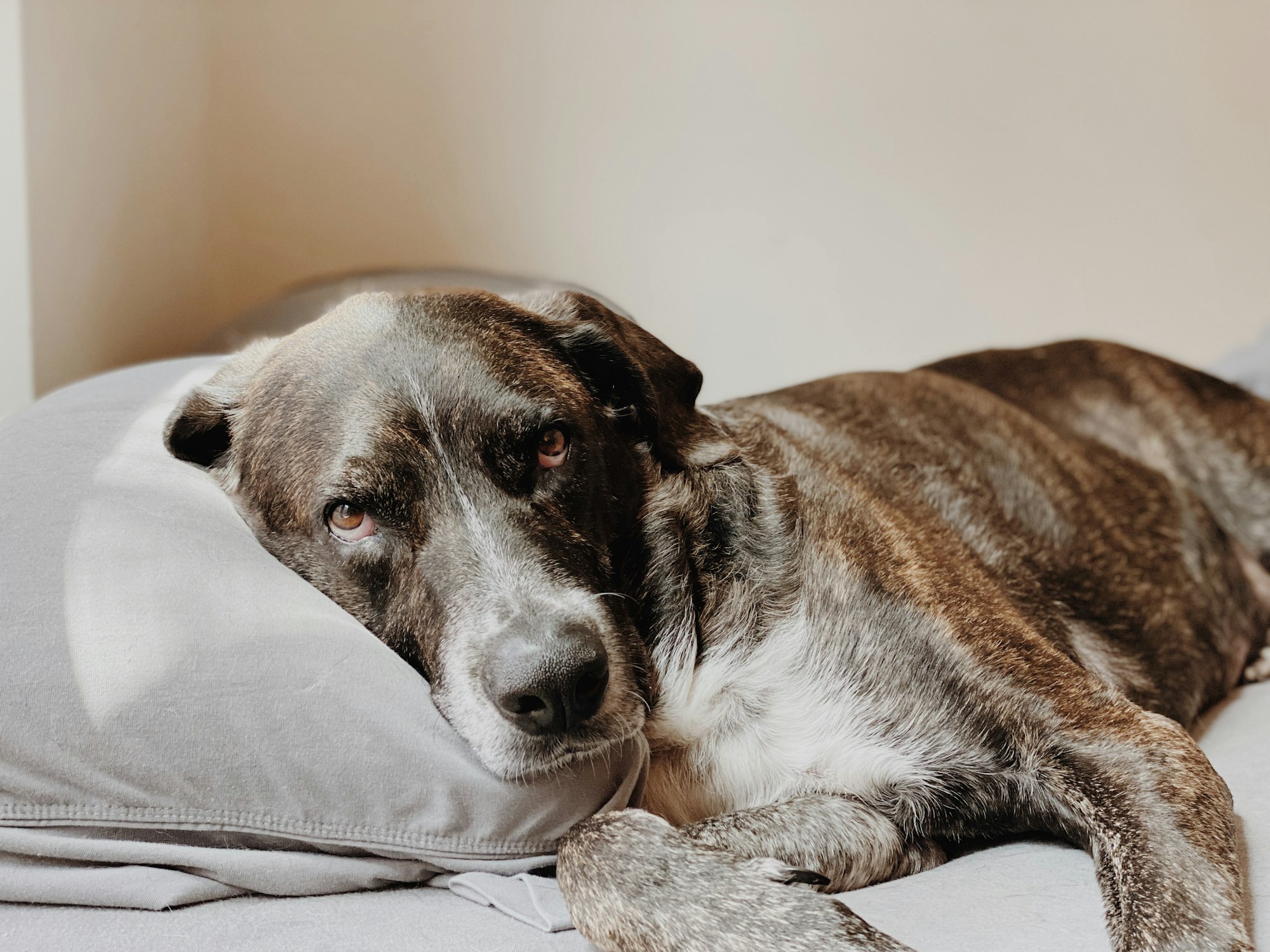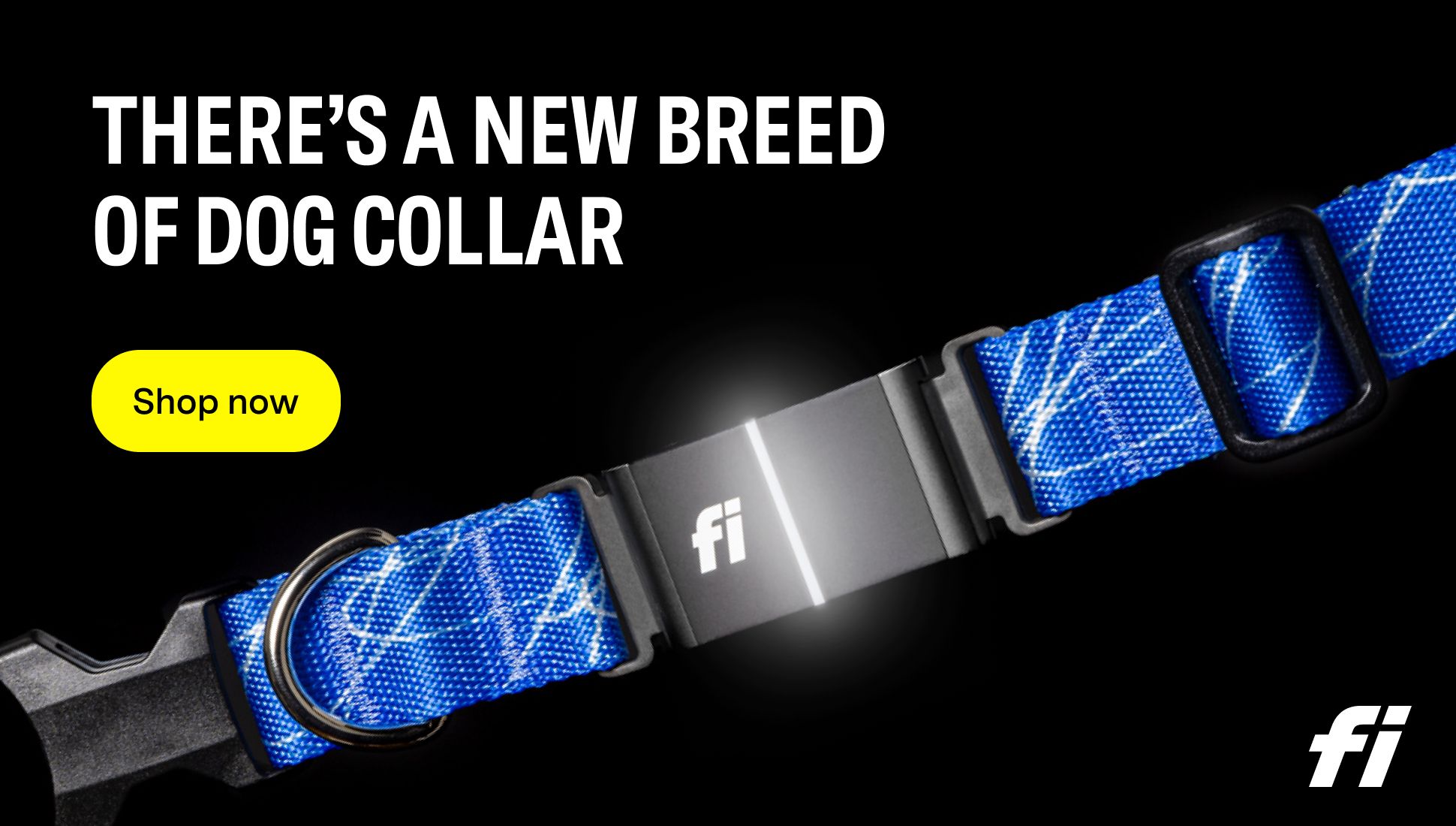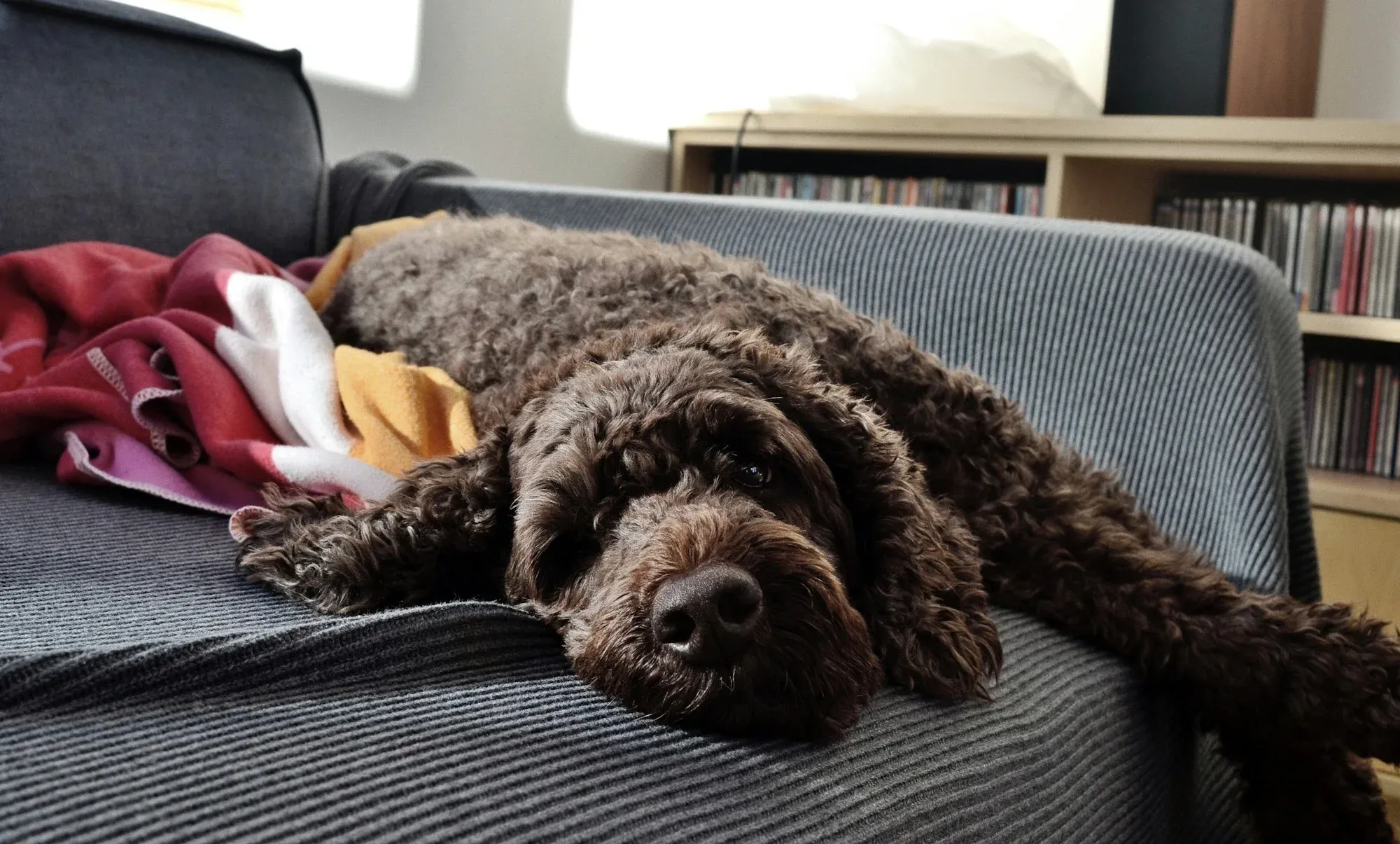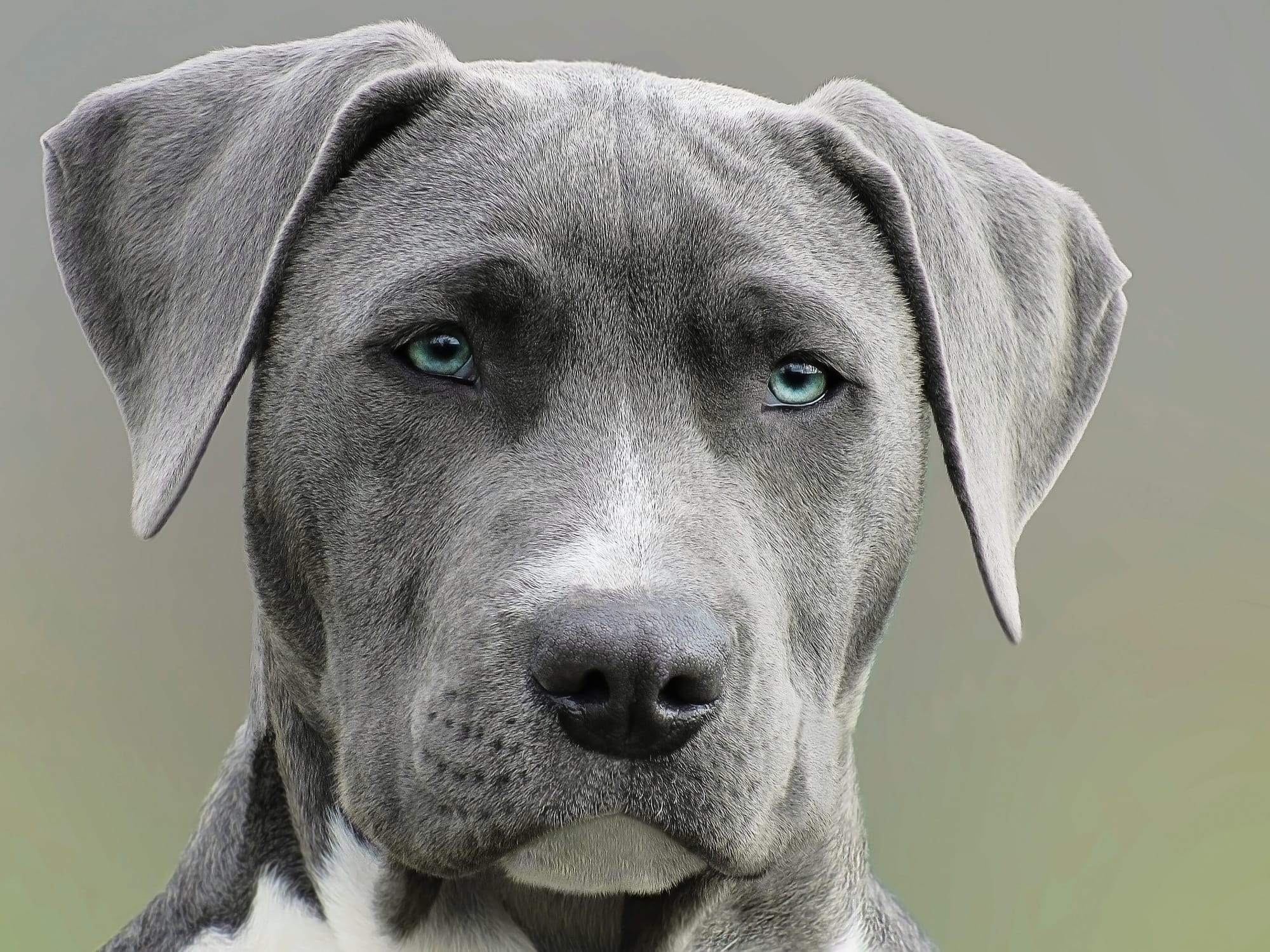If you are thinking of getting a pet dog or are simply curious about the adorable brindle pattern found on some canine breeds, this article is for you. Brindle dogs are loved by many for their unique beauty, characterized by dark stripes and patches of any shade ranging from lighter gold to a deeper brown. But what's even more interesting than the striking appearance of these pups is how exactly it comes into being. We'll discuss all about brindles from their genetics, characteristics, and potential breeds that can have this coat coloration, so read on to know more about this beautiful type of fur.
What is a Brindle Dog?
A brindle dog has a coat pattern of dark stripes over lighter background fur. The stripes can be anything from black to chocolate brown, grey, or even golden. The lighter fur ranges from cream, white, fawn, or red. Brindling can occur in almost every dog breed, including Boxers, Greyhounds, Pit Bulls, Mastiffs, and Terriers. Brindle coloration is not recognized as a breed standard by all kennel clubs, but some breeds, like the French Bulldog, require brindle stripes in their coat color to be eligible for dog shows.

How Do Brindle Dogs Differ from Other Dogs?
Brindle dogs can be distinguished from other dogs by their unique coat pattern and color. They are not a specific breed of dog but a pattern seen across various breeds. Brindle dogs can also have different temperaments, depending on their breed. For example, a brindle Boxer is known for being a loyal and energetic dog. Brindle Greyhounds are quiet and calm, while brindle Pit Bulls are affectionate and protective.
Brindle dogs can also be predisposed to certain health problems associated with their breed. For example, brindle pitbulls are prone to having skin problems due to their short coats, while brindle Greyhounds have a higher risk of suffering from bloat. Additionally, brindle dogs may require different grooming techniques depending on their coat type and texture.
Want to know more about TryFi.com? The Fi Dog Collar is a GPS tracking collar that not only keeps track of your dog’s location, activity levels, and sleep patterns, but it also alerts you if your dog escapes your backyard. This is the fastest way to find your dog after an escape. Try the Fi Dog Collar today!
The Beauty of Brindle Dogs
Brindle dogs are stunning animals that sport unique coat patterns. This coloring is achieved when two different coat colors combine in a swirled or striped pattern creating a mesmerizing look. The appearance of brindle is seen in various breeds, including Boxers, Pit Bulls, Boxer-Bulldog mixes, and French Bulldogs, to name a few.
Brindle dogs are often admired for their striking color combinations and playful demeanor. They are undeniably eye-catching animals that turn heads wherever they go. It is fascinating to watch these dogs run and play with their peculiar coloring, leaving a trail of beauty wherever they frolic. Regardless of the breed, brindle dogs are incredibly distinctive, making them stand out in a crowd and appreciated by dog lovers worldwide.
A Closer Look at the Unique Markings of Brindle Dogs
Have you ever seen a brindle dog and wondered what made its coat unique? A Brindle is a coat pattern characterized by a mixture of colors and stripes, varying in intensity and direction. While some might mistake their coat as brown or black, brindle dogs showcase a distinct pattern that sets them apart from other dog breeds. Here, we will delve deeper into the fascinating world of brindle dogs and learn more about their markings and why they are so unique.
- The brindle pattern can be seen in many dog breeds, from the Boxer and Great Dane to the Greyhound and Whippet. Brindle markings are usually characterized by black, brown, or grey backgrounds, with stripes of light-colored hair interspersed between the darker fur. Combining these colors and stripes creates a stunning and attention-grabbing coat that draws the eye.
- Interestingly, the direction and pattern of a brindle dog's coat can also vary. Some may have vertical stripes running down their body, while others may have horizontal stripes across their coat. Some brindle dogs may even have circular or whirl patterns, which make their coat look like a kaleidoscope of colors.
- While the brindle coat pattern is undoubtedly unique, there is also more to these dogs than just their striking markings. Brindle dogs are known for their intelligence, loyalty, and gentle nature. They make great family pets and are incredibly loyal to their owners.
- However, one unfortunate aspect of the brindle pattern is that some people may mistake dogs with this coat as aggressive or dangerous. This misconception has led to some brindle dog breeds being labeled "dangerous" or "aggressive." It is essential to remember that the color and markings of a dog's coat have nothing to do with their temperament or behavior.
Brindle dogs showcase a unique coat pattern distinguishing them from other dog breeds. Their coat color and markings vary in intensity and direction, creating a stunning effect. However, it's important to remember that there is more to these dogs than just their striking coat - they are known for their intelligence, loyalty, and gentle nature. We should celebrate the beauty of brindle dogs and not rely on harmful stereotypes or misconceptions.
Exploring the Genetics Behind the Beautiful Pattern of Brindle Coats
Have you ever wondered why some dogs have such striking coats? Take, for instance, brindle patterns. They are truly stunning, with unique black, brown, and tan swirls. What causes this beautiful coat pattern in dogs? It's all in genetics, and here, we'll explore the science behind it all.
- First things first, let's define what a brindle coat is. A brindle pattern is characterized by a coat with a base color of fawn, gold, or yellow with black or brown stripes, making them look almost tiger-like. These dogs have a unique and striking appearance, but what makes these patterns occur?
- The genetics behind the brindle coat comes down to a gene known as KBr. KBr stands for "brindle allele of the K-locus gene," and it's the gene responsible for this striking coat. When a dog inherits one copy of the KBr gene, it will have a brindle coat, while two copies will lead to a striped pattern. It's important to note that modifiers of this gene can change the intensity of the brindle coat or even mask the pattern altogether.
- Now let's dive a little deeper into the genetics of brindle. The KBr gene, located on chromosome 9 in dogs, controls the distribution of coat colors in the body. The brindle pattern comes from a complex interaction of two or more genes that produce the dark markings over the light fur.
- But what about those with white or other colors mixed in? It turns out that the KBr gene does not control the distribution of other coat colors or patterns. So a dog with a brindle coat may also have white or another color mixed in due to other genes' influence.
Understanding the genetics behind brindle coats is fascinating and showcases how complex and intricate the world of genetics can be. It's amazing to think about how one gene can determine a dog's entire coat pattern, but diving deeper into the science makes it easy to see how it all works together. Next time you see a brindle-coated dog, take a closer look and appreciate the beauty of their unique pattern.

Different Types of Brindle Dog Breeds
Brindle dog breeds are some of the most beautiful and fascinating canines you'll ever encounter. Characterized by a lovely mix of two or more colors in a pattern of stripes or blotches, they're captivating to look at and cuddle with. In this post, we'll explore a few popular breeds of brindle dogs and their unique characteristics. Whether you're already a proud owner of a brindle dog or trying to decide on a new family pet, read on to discover more about these alluring breeds.
1. Boxer:
Boxers stand out for their affection towards their owners, loyalty, intelligence, and energetic personalities. They weigh 55-75 pounds and stand around 22-25 inches. Boxers come in various bright colors, including fawn, white, and brindle. Initially bred for hunting, boxers are mostly used as service or therapy dogs.
2. Greyhound:
Greyhounds are one of the fastest breeds of dogs and make excellent family pets. They are skilled in racing, hunting, and coursing. Greyhounds come in many colors, including brindles. They have a lean but muscular body, stand around 28-30 inches, and weigh anywhere from 60-70 pounds. Greyhounds are also great apartment dogs as they don't require a lot of exercise.
3. Dutch Shepherd:
The Dutch Shepherd is often used as a herding dog and stands out for its loyalty, intelligence, and affection towards its owners. They weigh between 50 and 70 pounds and stand at around 21-25 inches. Dutch Shepherds come in many colors, including brindle, and have dense coats that don't require much grooming. They're great family dogs but will require early training due to their natural guarding instincts.
4. Staffordshire Bull Terrier:
Originally bred for bull-baiting and fighting, Staffordshire Bull Terriers today are largely bred as happy and affectionate family pets. They're known for their playful and energetic personalities. Staffies weigh around 24-38 pounds and stand at around 14-16 inches. Staffies with brindle coats usually have red, black, and tan patches. They are considered great apartment dogs as they don't require much exercise.
5. Pit Bull:
Pit Bulls, also known as American Pit Bulls, are muscular and agile dogs bred for fighting purposes in the past. However, today, they are mostly used as family pets and therapy dogs. They have a sturdy and compact build, come in many colors, including brindle, and weigh anywhere from 30-60 pounds. Their thick and short coat is easy to groom, and they're known for their attentive and loving nature.
Brindle dog breeds come in various shapes, sizes, and personalities, but their unique coloring pattern sets them apart from other dog breeds. Whether you're looking for a box full of energy, a good cuddler, or a guard dog, you can never go wrong with a brindle breed. These dog breeds will have you swooning over their unique mix of colors and patterns in no time.
Characteristics of the Brindle Coat Color
If you're considering adopting a brindle dog or already have one, knowing some essential facts about this coat color is vital. We'll look at the characteristics of brindle coat color, from its history to its genetic makeup and different shades.
- Brindle patterns go back centuries, with historians tracing their roots to the African continent. The color markings became popular in bull breeds such as Boxers and Boston Terriers. Today, this color pattern can be found in many different breeds, including Mastiffs, Greyhounds, Curs, and even some breeds of cats. The brindle coat color comes in shades, from light and dark brown to black and grey.
- One of the distinguishing features of the brindle coat color is its marking. It's a striped pattern that covers the dog's coat. The stripes aren't even, which gives them a unique look. Brindle patterns are generally symmetrical on both sides of the dog's body, although some may show more stripes on one side than the other. Additionally, the stripes' specific color and pattern vary among dog breeds.
- One of the most interesting facts about brindle coat color is that it's highly dependent on genetics. The brindle gene, often called the K gene, is dominant in certain breeds. If one parent has the gene, the puppies will also inherit it. However, if both parents have the same gene, the offspring can inherit an undesired coat color or pattern.
- Another notable characteristic of brindle coat color is that it hides dirt well. Compared with lighter coat colors like white or beige, the brindle's pattern helps hide dirt and other stains, making it easier to maintain. The downside of the brindle color is that you can't miss shedding. If you own a brindle dog, investing in a good pet hair vacuum and grooming tools is wise to keep your home and surroundings clean.
- Lastly, the brindle coat color gives your furry friend an intimidating edge. A brindle dog naturally looks fit for survival or even warfare. The color showcases an aura of toughness and loyalty, which makes them an ideal companion for families and individuals alike. Although brindle fur's dark and majestic looks may look intimidating, brindle dogs are often gentle, loving, intelligent, and devoted to their owners.
Brindle Dogs in History and Pop Culture
Brindle dogs' history can be traced back to ancient civilizations, such as the Roman Empire, where they were bred as fighting dogs and guardians. The Greek Molossus and the Roman Molossus were the two primary brindle breeds used in battle, and they were known for their strength, courage, and loyalty. Centuries later, brindle breeds such as the Boxer, the Staffordshire Bull Terrier, and the Bullmastiff were developed by breeding the Molossus to various other breeds. These sturdy and fierce dogs eventually became companions to families and guardians of homes.
In the modern era, brindle dogs have found their way into pop culture, appearing in movies, TV shows, and advertisements. One of the most famous brindle dogs is Hooch, the French Mastiff, from the 1989 movie "Turner and Hooch" starring Tom Hanks. Hooch's sweet and goofy personality captured the hearts of many, and the breed quickly became popular. The "Staffy," or Staffordshire Bull Terrier, is another brindle dog breed that has gained fame and popularity in pop culture. "Petey," the famous dog from "The Little Rascals" movies, was a white and brindle Staffordshire who captured the hearts of audiences.
Despite their popularity in pop culture, brindle dogs often fall victim to breed-specific legislation (BSL). This controversial legislation prohibits or restricts ownership of certain breeds, including many brindle dog breeds. The American Pit Bull Terrier, a breed typically associated with brindle coats, is one of the primary targets of BSL.
However, the truth is that these brindle dogs are often punished for the actions of irresponsible owners, and the breed itself is not inherently dangerous. Many brindle dog advocates are fighting against BSL to protect their furry companions and to educate the public about the gentle nature of these breeds.

Health Benefits and Risks Associated with Brindle Dogs
Brindle dogs are unique for their distinguishing striped coat. But aside from their physical appearance, have you ever wondered what health benefits and risks come from owning a brindle dog? In this blog post, we'll explore the different aspects of their health and provide you with all the information you need to make an informed decision.
1. Unique DNA
All dogs, irrespective of breed, have unique DNA. But studies indicate that brindle dogs have a higher chance of inheriting certain diseases. For instance, they are prone to heart disease, leading to respiratory or lung problems. Their DNA also puts them at risk of developing certain cancers and autoimmune diseases. One such disease is lupus, which can trigger the immune system to attack healthy tissues, resulting in hair loss, weight loss, and joint pain.
2. Physical Exercise
Physical exercise is an essential factor in maintaining a healthy and happy dog. Brindle dogs thrive on exercise and activities, especially outdoor games. The brindle dog breed is ideal if you're looking for great exercise companions that love running and playing catch. However, ensuring you don't over-exercise your dog is important, leading to joint problems and other health-related concerns. Strike a balance, and ensure your brindle dog is engaged in moderate to high-intensity physical activities.
3. Mental Stimulation
Mental stimulation is equally crucial as physical exercise for brindle dogs. Brindle dogs are intelligent and require mental stimulation, such as puzzles and games, to keep them entertained. Mental stimulation fights boredom and increases mental clarity, thus lessening stress levels. Chronic stress is associated with several dog health conditions, such as anxiety and depression.
4. Diet
The diet of a brindle dog significantly influences its physical health. You should ensure your brindle dog's diet is well-balanced, comprising protein-rich food such as meat, eggs, and fish. However, avoid poor-quality dog food that contains mostly preservatives and additives. Ensure your dog's diet consists of whole foods and ensure they get the necessary nutrients.
5. A Good Veterinarian
Lastly, it's essential to have a reliable veterinarian to help take care of your brindle dog's health needs. Regular check-ups, routine vaccinations, parasite prevention, and dental care maintain dog health and prevent long-term health concerns. A veterinarian can help your brindle dog live up to its full potential and live a long, happy, and healthy life.
Conclusion
Brindle dogs are unique and beautiful characters with a special set of genetics that cause their coats to come in unique colorations. While they may not fit neatly into the traditional pedigree breeds, brindles still offer purebred companionship with their incredible charm and beauty. To best care for these dogs, providing them with good nutrition, ample socialization, and regular grooming is important to keep their coat healthy and maintain their signature stripes and colors.
Despite quite a bit of mystery surrounding the science behind these majestic lumps of fur, the certain thing is that brindle pups bring joy to each home that welcomes them. With so much fierce loyalty and unconditional love, it is no wonder why many people fall in love with brindle dogs when they meet them.

